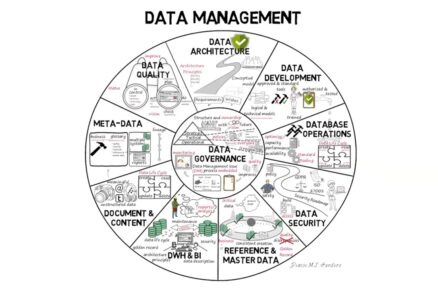Exposure Management
Exposure management is, in simple terms, the active management of credit limits and balances. There is however, buried in this simplicity, a more complex set of relationships that need to understood and managed to achieve optimal value.
First looking at credit limits; the credit limit assigned to each customer sets the maximum size to which a balance can grow and the total risk of that account. The first of these points is easily understood but the second is more contentious. Is the risk of an account dictated by the limit or by the actual balance at any one time? You might feel that since an account goes bad for its current balance that this is the better measure of risk. This seems true at least for fixed term loans, where an initial loan is slowly paid down leading to steadily decreasing balances which represent the risk of an account at each point in time. However, it only holds true if the client doesn’t have automatic access to their paid down funds or, in other words, where the limit decreases along with the balance. For revolving balance products or products which include automatic access to paid-down funds the majority of bad accounts will continue to spend until they hit their limit and therefore the limit that is the better measure of risk. So in all cases it is the limit that determines risk as the balance will almost always tend towards this at default.
Balances drive revenue. The limit represents potential revenue but actual revenue is only earned from actual balances. Lenders derive the majority of their income from interest charged on balances outstanding and the fees – and in the case of credit cards, the commission – earned on the transactions that build those balances.
If limits relate only to risk, then it seems that limits should be as low as possible. If balances relate only to revenue, then it seems balances should be as high as possible. However, limits also stimulate balances and balances also affect risk so these two concepts must interact and their interactions are what form the basis for exposure management. Limits should be high enough so as not to stifle good spend, low enough so as to avoid un-used exposure and balances should be high enough so as to drive maximum revenue but low enough so as to avoid increasing risk.
Limits and balances interact at three stages of the credit life-cycle: they are formed when a new account is opened; they are maintained while that account operates within the standard performance parameters of a portfolio; they are decreased when performance falls below those parameters.
I will first discuss each stage individually and then talk about their inter-dependencies and finally the implementation of the strategies discussed.
Exposure Creation
Unfortunately, because the nature of a product plays such a significant role in exposure management we must examine separately two distinct product groups. The first basic group of products is made up of those products that start with a balance equal to their limit and where, over time, the balance decreases away from the limit leading to unused exposure later in the product’s life-cycle – fixed term loans are a good example. The second group includes those products that start with a zero balance and some higher limit and where, over time, the balance increases towards the limit leading to unused exposure in the early part of the product’s life-cycle – credit cards are a good example.
With the first group then, at the point of exposure creation both risk and revenue are established so we can say that all the exposure that is created is productive. However, in the second group it is only risk and potential revenue that is established so all exposure that is created is unproductive.
Exposure Maintenance
Intimately linked to exposure creation is exposure maintenance and again it follows a different path depending on the product’s own characteristics. Over time either the limit or the balance – or both – can be adjusted.
The link between limits and balances is not always direct. A balance can be increased back to the original limit with the limit remaining unchanged – a top-up for loans or a spend campaign for cards for example. Or, the limit can be increased preceding a later but larger increase in balances.
The reverse is also true. Where limits are not being used – in the case of revolving credit products – the limit can be decreased without impacting the balance. This strategy is usually employed for one of two reasons: to reduce the cost of holding unused limits for low risk customers or to reduce the risk of higher EADs for high risk customers.
Exposure Cancellation
Over the life of an account it may become clear that the exposure is no longer creating value and needs to be cancelled; this process is usually managed by the debt management team. Again, exposure cancellation can be achieved by decreasing in limits, balances or both.
Limit decreases are useful in revolving credit products where a growing bad balance has not yet reached the original limit. In this case it results in the minimisation of the actual losses or bad debt provisions incurred on that particular account – though it is not always possible to do so within the restrictions of the contract between lender and customer.
In more sophisticated organisations a stepped limit decrease can also occur. This most commonly happens as part of a payment plan established in the debt management process. Here a revolving balance is effectively turned into a fixed term balance with the limit decreasing along with the balance as payments are received until a certain point is reached at which time the limit ceases to decrease with payments and, instead, becomes available again.
Exposure Management Strategies
So, exposure management involves optimising limits and balances within and across each stage of the credit life-cycle. The relative importance of limits and balances will change over time and depending on the structure of the product in question.
For fixed term loans, the most important strategies to consider are those which:
(a) set the optimal original limit, as this is also the original balance
(b) increase the average ‘good’ balance by topping-up loans periodically; by extending loan terms; by cross-selling new balances to existing ‘good’ customers
(c) decrease the average ‘bad’ balance by making repayment plans in collections; by using risk-based collections to align effort to reward; by selling or outsourcing the worst of the debt
For revolving credit, the most important strategies to consider are those which:
(a) encourage initial balances through balance transfers and/ or debt consolidations
(b) increase the average good balance by increasing credit limits to low risk/ high utilisation customers; by increasing the revolve rate of a portfolio (customers paying the minimum balance rather than the full amount each month); using risk based pricing to incentivise balance growth
(c) decrease the average ‘bad’ balance by decreasing limits to accounts displaying risky payment or spend behaviour; making repayment plans in collections; by using risk-based collections to align effort to reward; by selling or outsourcing the worst of the debt
Implementing Exposure Management Strategies
Like all credit risk strategies, good exposure management is built around strong decisioning. Meaning that in order to successfully implement exposure management within your organisation you will need to have access to three things: good data; good scorecards; good strategy management software.
Internal databases should hold application and performance data. The data held should be sufficient to study the limits and balances of accounts over the credit lifecycle and should ideally include the results of test-and-learn campaigns so that the actual impact of limit increases, for example, can be known. Using your own, accurate data is important to the long-term value of the project but it not necessary right from the start. However, in these cases it is still important to use as much internal or external data as you can reasonably acquire.
This data should then be used to build scorecards and analytical models, the outputs of which should be integral to ever exposure management strategy: using risk and income indicators to set initial limits; using risk and utilisation indicators to identify cross sells, balance top-ups and credit limit increases candidates; using risk indicators to prioritise debt management activity, etc.
The output of these scorecards should then be used to drive the business strategies mentioned above. This is where automated strategy management software comes to the fore. The process can be run in an offline manner for small, simple portfolios but larger or more sophisticated portfolios usually need an automated system to pass the data through the scorecards, interpret the results of those scorecards, assign a strategy path to each account (including test-and-learn if applicable), apply the actions of each strategy path, pass the information back to the database and report on the results. Until each of these stages can link seamlessly and the results can be easily measured, optimal exposure management will not be possible.






